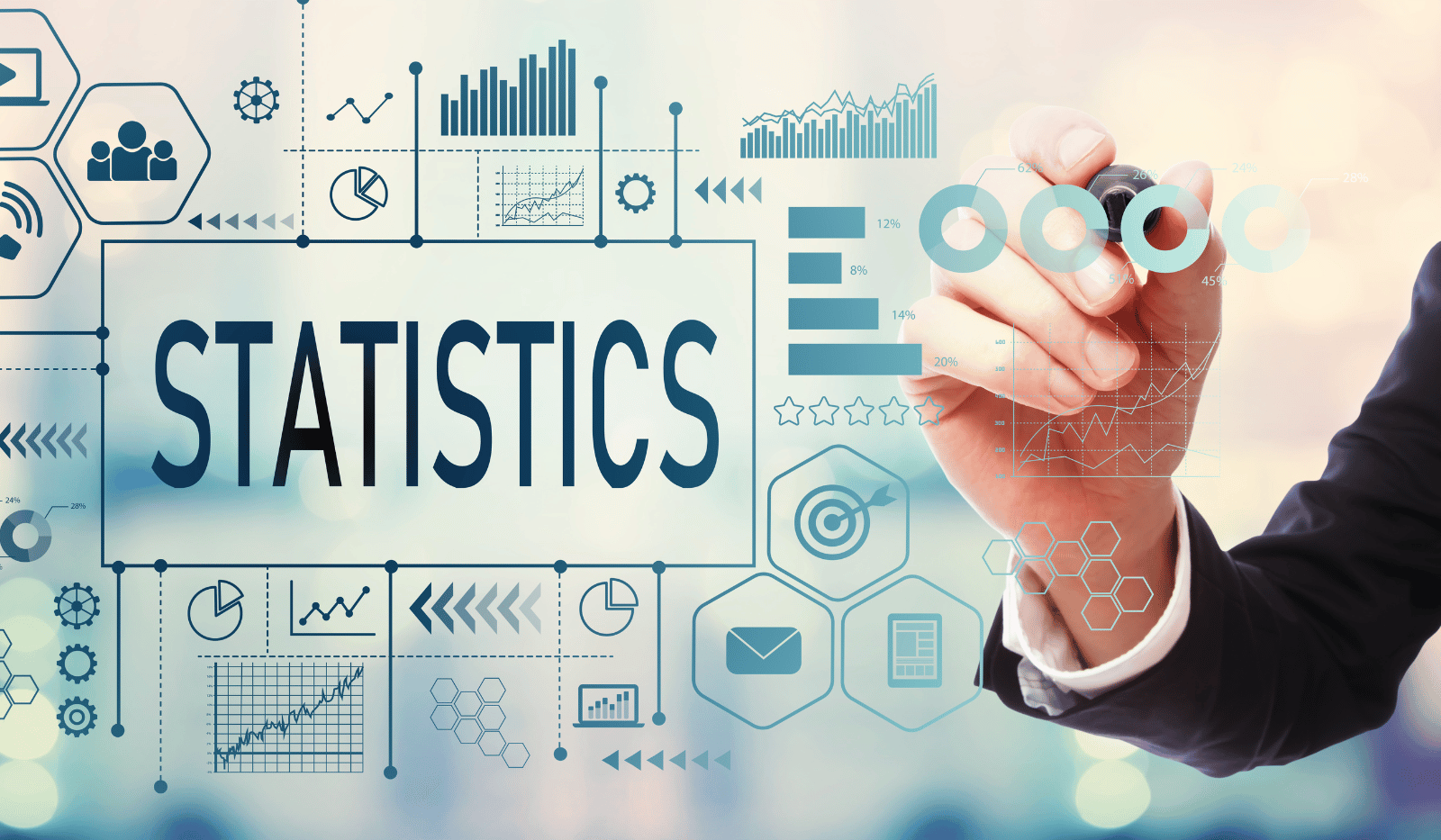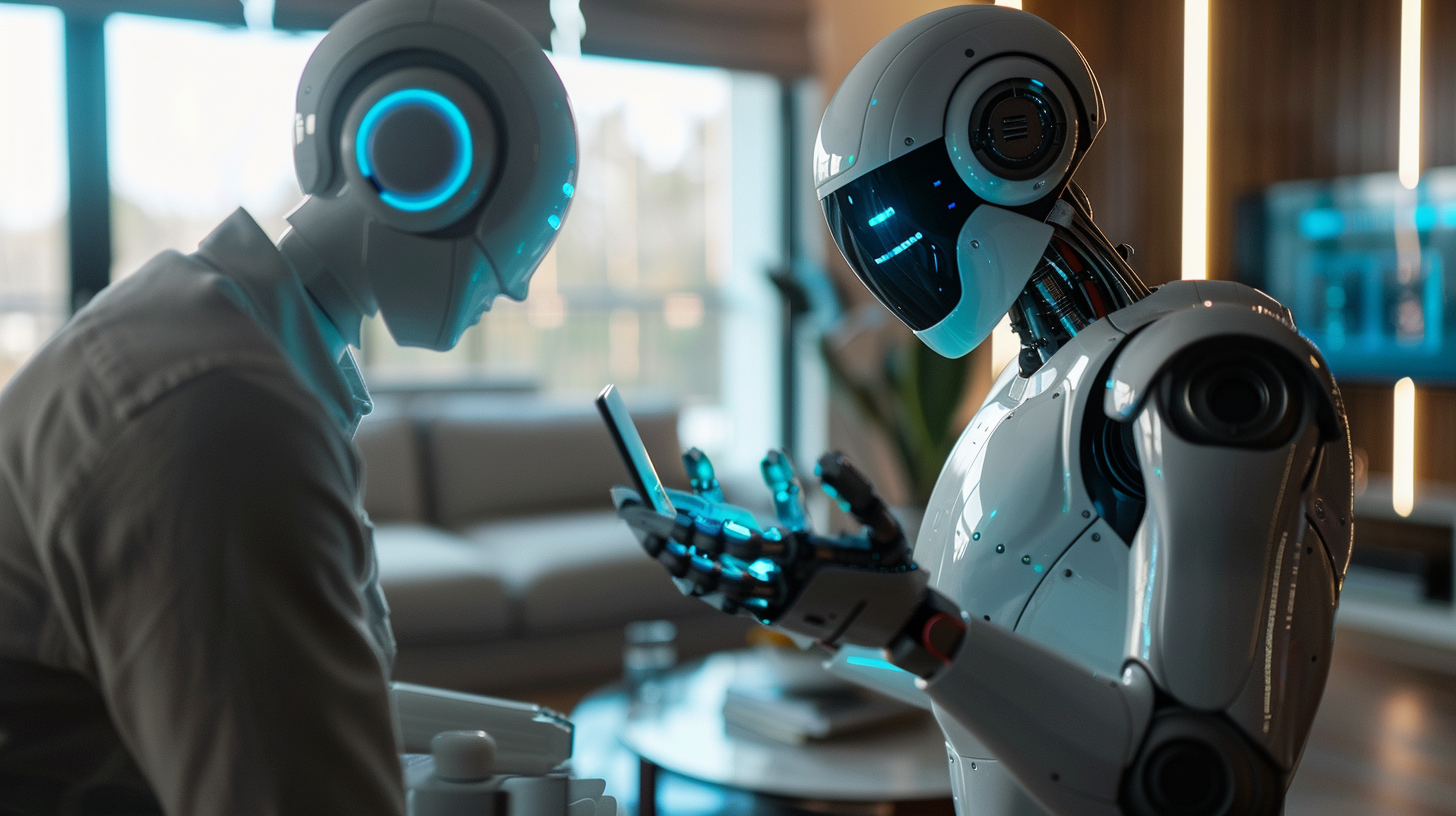There’s no doubt that Artificial Intelligence (AI) has cemented itself as a transformative force. It is disrupting industries—reshaping the way that people live and work. Because of its impact, staying informed and updated about AI statistics has become a crucial success factor for many businesses.
Defined as the capability of a computer to do tasks usually done by humans, AI can assist humans in improving efficiency, streamlining processes, and enhancing customer experiences. By monitoring the latest developments in AI, organizations will have a competitive edge.
This article serves as a guide—a comprehensive compilation of AI statistics that will equip business owners with what they need to know to navigate the AI landscape seamlessly.
AI statistics in a nutshell
The growth of AI over the recent years has been unstoppable. Organizations all over the world have recognized its potential. As a result, many enterprises and businesses are starting to integrate AI into their operations for various reasons.
Check out some of the AI growth statistics and AI adoption statistics we’ve compiled:
- The AI market size is forecasted to reach a whopping $407 billion by 2027. (Markets and Markets)
- AI is projected to have a 21% increase in contribution to the United States GDP by 2030. (Forbes)
- The annual growth rate of AI is expected to be 37.3% from 2023 to 2030. (Grand View Research)
- By 2030, AI is projected to contribute $15.7 trillion to the global economy—which is more than the current combined output of China and India. (PwC)
In a nutshell, the growth of AI shows no sign of slowing down. According to these numbers, AI will be a major player in the years to come.
AI in the workplace statistics: How AI is reshaping the workplace
Will AI replace humans?
The integration of AI in the workplace has brought about significant, exciting, and concerning changes. On the upside, AI has emerged as a powerful tool to bring efficiency up a notch. On the downside, this has created anxiety for workers as they fear losing their jobs to robots.
Just take a look at these statistics:
- 77% of survey respondents expressed concern that integrating AI into business operations will cause job losses in the near future. (Forbes Advisor)
- As AI continues to evolve rapidly, it could affect around 15% of the global workforce—400 million workers might be displaced. (McKinsey)
- By 2025, AI and technology will replace about 85 million jobs worldwide. (World Economic Forum)
However, there are also statistics that back up the claims that AI will actually, in fact, create more jobs:
- There will be 97 million new jobs created as a result of the evolution of the economy and job market. (World Economic Forum)
- In 2022, 39% of businesses hired software engineers, and 35% hired data engineers for AI-related supporting positions. The demand for AI support roles will continue to increase. (McKinsey)
What’s the verdict? While the future remains uncertain, one thing’s for sure: AI is already being adopted by many businesses across different industries—so it’s important to keep an eye on what this could mean for the job market.
A quick look at AI adoption statistics
Just to quantify what the current AI adoption landscape looks like, here are a few stats:
- 91% of top businesses reported that they have ongoing investments in AI already. (NewVantage)
- In 2022, 35% of organizations reported that they were using AI in their business—4 percentage points higher compared to 2021. (IBM)
It definitely looks like more businesses are zeroing in on the power of artificial intelligence. In fact, 64% of businesses expect that AI will help increase overall productivity. True enough, 61% of workers share that AI adoption helped boost their overall productivity.
AI in healthcare Statistics: AI-driven innovations
Forecasts report that the global healthcare AI market would reach around $188 billion by 2030 (Statista). As the adoption of AI moves towards that direction, here are some more AI in healthcare statistics and forecasts:
- Up to 73% of healthcare administrative tasks can be automated by AI. (Business Insider)
- With AI reducing administrative tasks, physicians can spend almost 20% more of their time on patients. Nurses, on the other hand, would be able to spend around 8% more of their time with patients. (Statista)
- In 2023, around half of US-based healthcare providers are planning to deploy AI tools in the facilities. (Gartner)
With AI in healthcare, people can expect:
- AI-powered Robotic Process Automation (RPA) solutions for error-less treatments.
- Emotion AI for online doctor consultations, diagnosis via voice analysis, and medication reminders.
- Data-driven and personalized healthcare services will be more available. This includes wearable AI like wristbands, tension belts, etc.
Despite these exciting developments and forecasts, 6 out of 10 US adults shared that they would not be comfortable if their healthcare provider relied on AI for diagnosing and treating. The same research also shows that 8 out of 10 US adults would not like having to talk to an AI chatbot if they were looking for mental health support.
The integration of AI in healthcare holds immense potential for transforming the way we approach patient care, medical diagnosis, and treatment. As AI continues to advance, it is crucial for healthcare professionals and stakeholders to embrace it so they can leverage its capabilities.
Statistics on AI in marketing and customer service: Enhancing experiences and engagement
The marriage of AI and marketing (including sales and customer service) is not-so-slowly but surely transforming how businesses engage with their target prospects and existing customers.
Semrush even reports that compared to other departments, marketing and sales teams prioritize AI and machine learning more. From personalized recommendations to AI-driven chatbots, we uncover the impact of AI on customer interactions and how it enhances customer experience across various industries.
Check out these AI marketing statistics on the adoption of AI in marketing, sales, and CX:
- The global AI market in marketing is estimated to reach more than $40 billion by 2025. (Unite)
- 51% of eCommerce companies leverage AI so they can provide seamless user experiences. (Semrush)
- Sales teams that use AI for lead generation efforts can increase productivity by 50%. (McKinsey)
- 64% of business owners believe that AI contributes to better customer relationships. (Forbes Advisor)
Let’s talk about AI chatbot statistics
- 23% of customer service businesses currently already use AI-powered chatbots. (Salesforce)
- It is projected that by 2025, AI will power 95% of customer interactions. (Servion Global Solutions)
- Using chatbots can reduce customer service costs by around 30%. Plus, they can handle 80% of repetitive tasks and customer questions. (IBM)
- According to 66% of customers, AI-powered chatbots make their lives easier because they save time and effort. (Zendesk)
- 26% of companies already offer AI and chatbot-guided self-service portals. (Zendesk)
So how does AI impact the overall customer experience?
- 60% of customers still prefer a live customer service representative. (UserLike)
- 21.5% of people in the US speak a language other than English, so multilingual chatbots are super valuable. (Zendesk)
- 70% of consumers expressed concern about misinformation from AI tools. (Forbes Advisor)
- 62% of consumers have no problem with using AI to improve the customer experience. (Salesforce)
These AI customer service statistics tell us one thing: Ai in marketing and customer service is definitely still a work in progress.
While it has already come so far, it still has a long way to go. Additionally, the consensus is that the human touch is still a powerful thing. While AI can definitely help, it looks like customer service will always be a marriage of AI tools and human agents.
Do check out this guide on how to maximize AI and human support agents.
The banking revolution: How AI is transforming financial services
The banking and finance sector is undergoing a major transformation with the integration of AI. After all, AI’s adoption and usage in this industry have revolutionized operations, risk assessment, fraud detection, and customer experience. Just take a look at these statistics on AI and banking:
- 56% of financial services companies reported that they have already implemented AI in risk management. (Business Insider)
- 75% of respondents from banks with over $100 billion in assets are currently implementing AI strategies. (Business Insider)
- 91% of US banks use AI for fraud detection. (Temenos)
- The global AI fintech market will reach $22.6 billion in 2025. (Forbes Advisor)
- 70% of financial services firms already use machine learning to predict cash flow, fine-tune credit scores, and detect fraud. (Forbes Advisor)
- Banks can save $447 billion by 2023 by using AI apps. AI tools are also forecasted to boost the banking industry’s revenue by $1 billion. (Business Insider)
Of course, with banking and finances being a sensitive and very critical industry, there are still some second thoughts associated with integrating AI.
- For 62% of banks, the risks associated with handling personal data for AI usually outweigh the benefits. (The Economist)
- Half (50%) of IT executives from the APAC region said that privacy and security concerns are barriers to AI adoption in the banking sector. (Temenos)
Key takeaway: AI-powered solutions enable banks to streamline processes, improve risk management, and detect fraud with greater accuracy. As AI continues to evolve, the banking industry must embrace this technology to stay competitive and meet the changing needs of customers in the digital age.
By leveraging AI effectively, banks can create a future where financial services are more efficient, secure, and tailored to individual needs.
AI in recruitment statistics: Disruption in the recruitment landscape
Did you know that human resource specialists attract 250 applications (on average) for one position? Traditional recruitment challenges, such as time-consuming resume screening and candidate selection, are now being addressed through AI-driven solutions.
- The top priority for recruiters is investing in recruitment software and technology (Filtered.ai). For example, a Chinese company improved its hiring accuracy by 90%.
- Automated resume screening tools can save 60% or more in costs. (The HR Director)
- Thanks to chatbots, there is a 75% reduction in live chat HR inquiries (Kindly)
AI-powered resume screening and candidate selection algorithms enable recruiters to efficiently identify top candidates from a large pool of applicants.
By embracing AI in recruitment, organizations can optimize their hiring processes, attract top talent, and build successful teams that drive business growth.
AI in education: AI-driven innovations for students and teachers
The statistics surrounding AI adoption and usage in the education sector highlight its potential to revolutionize teaching and learning.
- Over 47% of learning management tools will be AI-powered. (Soocial)
- 20% to 40% of teachers’ current workloads can be automated, saving them time. (Soocial)
- In 2022, 25% of organizations reported successful investment and deployment of AI. (Holoniq)
There have also been interesting reports on the outcome of using AI in education:
- AI-powered tool Gradescope, had a 70% decrease in time spent by educators on the grading process. (Datamation)
- An AI chatbot can answer a student’s question in 2.7 seconds. (Soocial)
AI’s presence in education is to automate or take on repetitive administrative tasks so that educators can have more time to focus on creating learning materials and actually teaching.
Unveiling the potential: Exploring the current state of AI and corresponding forecasts
AI is rapidly advancing and widely adopted across industries, driven by technologies like deep learning and natural language processing. However, challenges regarding ethics, transparency, and bias require careful attention as AI continues to shape society.
- Robotic Process Automation and computer vision are the most commonly deployed AI technologies each year, from 2018 to 2022. Natural Language Processing, on the other hand, has moved up the ranks from the middle to now being just behind computer vision. (McKinsey)
- 58% of telecommunication companies use chatbots to boost their productivity. Meanwhile, 38% of healthcare providers already implement computer-assisted diagnostics. (Forbes Advisor)
- 42% of companies are exploring AI for future implementation. (TechJury)
- 63% of respondents expect their organizations’ investments in AI technology to increase over the next three years. (McKinsey)
- By 2025, there will be about 100 million people employed in the AI sector. (WeForum)
- By 2024, the global market for conversational AI is estimated to reach $22.6 billion. (Market Splash)
Experience the full impact of AI: transform industries and reshape the world
From healthcare to marketing, banking to education, AI is reshaping the way we live, work, and interact. By understanding the current state of AI and its potential implications, businesses and individuals can harness this technology to stay ahead of the curve.
As you navigate the ever-evolving AI landscape, TaskDrive and our unique virtual assistance services are here to guide you. Our team of experts is ready to help you unlock the full potential of AI for your business.
Take the next step towards AI-driven success. Book a call with TaskDrive today and get ready to use AI like never before.



